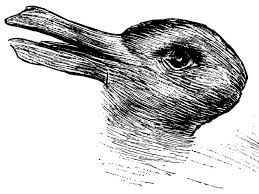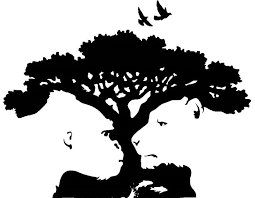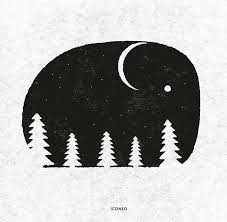UNIT 2: Cognition
Module 2.1a - Perception: influences on perception
Selective Attention: Focusing conscious awareness on a particular stimuli
Definitions:
inattention blindness = failing to see one visible object when our attention is directed elsewhere
Change Blindness = failing to notice in the environment; form of intentional blindness => Change Blindness -> cannot tell the diffrence in the images, dont realy notice a diffrence

perceptual set = a mental predisposition to perceive one thing and not another

Notes:
We selectively attend to and process only a small fraction of the incoming sensory information, inevitably blocking out much of the surrounding environment. This selective focus allows us to hone in on critical aspects of our experience, but it can also result in missing out on significant details.
When we concentrate intensely on a specific task, such as reading or problem-solving, we may exhibit intentional blindness, inadvertently overlooking other events occurring around us. This highlights the limitations of our attentional capacity, as seen in change blindness where we may not register changes occurring in our environment until they are pointed out or highlighted.
Perceptual set influences how we interpret and process sensory information based on prior experiences and learned concepts. It acts as a frame of reference, causing us to favor certain interpretations over others. This means that our expectations, context, motivations, and emotional states can shape our perceptions significantly. For instance, if someone has had negative experiences within a certain environment, they may interpret neutral stimuli in that context as threatening. Conversely, positive experiences may lead to more favorable interpretations. Perceptual set can ultimately affect decision-making, judgment, and our understanding of events and behaviors around us, highlighting that perception is not just about the sensory input but is also a complex interplay of cognitive processes.
Our learned concepts prime us to organize and interpret ambiguous stimuli in certain ways.
Our expectations and learned experiences heavily influence our perceptual set, the framework that affects our perception of reality. As a result, our interpretations are often colored by personal motivations, emotional states, and the context of the information we are observing, leading to potential biases in understanding events or behaviors.
Module 2.1b - Perception: perceptual organization and interpretation
Definitions:
Gestalt = an organized whole. Gastalt psychologist emphasized our tendency to integrate pieces of information into meaningful wholes.

Figure-ground = the organization of the visual field into objects that stand out from their surroundings

Grouping = the perceptual tendency to organize stimuli into coherent groups
Depth perception = the ability to see objects in 3D although the image that strikes the retina is 2D, we perceive it as 3D, and thus allows us to make judgments about distance.
Visual cliff = a laboratory device for testing depth perception in infants and young animals
Binocular cue = a depth cue, such as a retinal disparity, that depends on the use of two eyes
Convergence = a cue to nearby objects’ distance, enabled by the brain combining retinal images
Retinal disparity = a binocular cue for perceiving depth. By comparing retinal images from the two eyes, the brain computes distance — the greater the disparity (difference) between the two images, the closer the object.
Monocular cue = a depth cue, such as interposition or linear perspective, available to either eye alone
Stroboscopic movement = an illusion of continuous (as in a motion picture) experience when viewing a rapid series of slightly varying still images
Phi phenomenon = an illusion of movement created when two or more adjacent lights blink on and off in quick succession
Autokinetic effect = the illusory movement of a till spot of light in a dark room.
Perceptual constancy = perceiving objects as unchanging (having a consistent color, brightness shape, and size) even as illumination and retinal images change
Color Constancy = perceiving familiar objects as having consistent color, even if changing illumination alters the wavelengths reflected by the object
Perceptual Adaptation = the ability to adjust to changed sensory input, including an artificially displaced or even inverted visual field
Notes:
Gestalt psychologists searched for rules by which the brain organizes fragments of sensory data into gestalts, or meaningful forms. In pointing out that the whole may exceed the sum of its parts, they noted that we filter sensory information and construct our perceptions.
To recognize an object, we must first perceive it (see it as a figure) as distinct from its surroundings (the ground).
We bring order and form to stimuli by organizing them into meaningful groups, following such rules as proximity, similarity, and closure.• Depth perception is our ability to see objects in three dimensions and judge distance. The visual cliff and other research demonstrate that many species perceive the world in three dimensions at, or very soon after, birth.
Binocular cues, such as convergence and retinal disparity, are depth cues that rely on information from both eyes.
Monocular cues (such as relative clarity, relative size, texture gradient, linear perspective, and interposition) let us judge depth using information transmitted by only one eye.
The brain computes motion imperfectly, based partly on its assumption that shrinking objects are retreating and enlarging objects are approaching.
A quick succession of images on the retina can create an illusion of movement, as in stroboscopic movement or the phi phenomenon. We may also perceive illusory movement in a still spot of light in a dark room — the autokinetic effect.
Perceptual constancies, such as in color, brightness (or light-ness), shape, or size, enable us to perceive objects as stable despite the changing image they cast on our retinas.
Our brain constructs our experience of an object's color or brightness through comparisons with other surrounding objects.
Knowing an objects size gives us clues to its distance; knowing its distance gives clues about its size, but we sometimes misread monocular distance cues and reach the wrong conclusions, as in the Moon illusion.
experience guide are perceptual interpretations people who are blind from birth and gain sight after surgery, like the experience of visually recognized shapes and forms.
Sensory restriction research indicates that there is a critical period for some aspects of sensory and perceptual de-velopment. Without early stimulation, the brain's neural organization does not develop normally.
People given glasses that shift the world slightly to the left or right, or even upside down, experience perceptual adaptation. They are initially disoriented, but they manage to adapt to their new context.